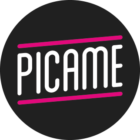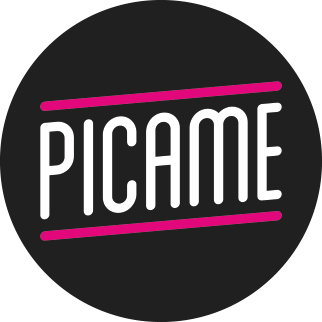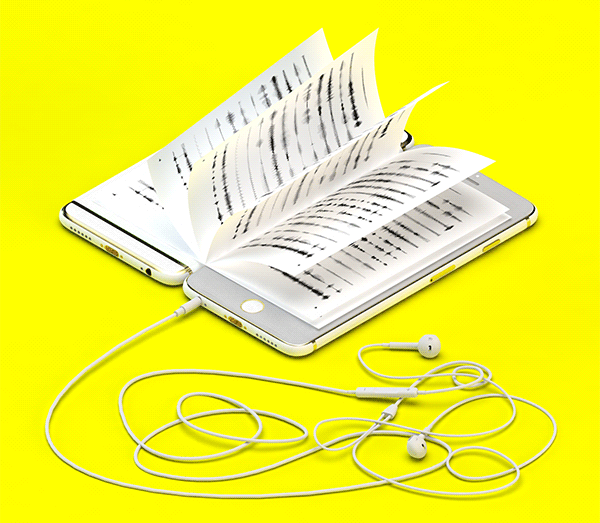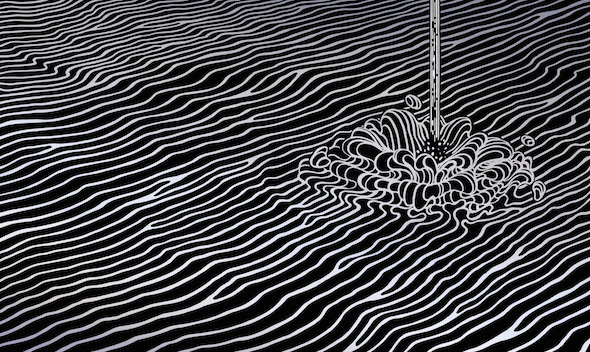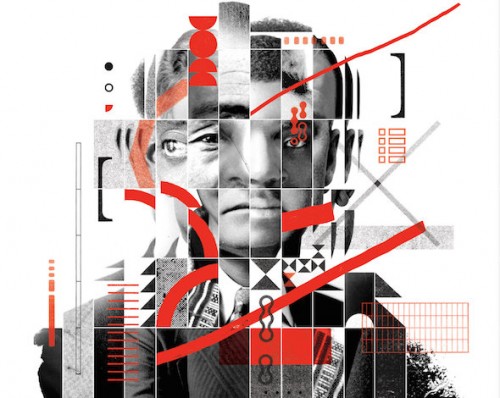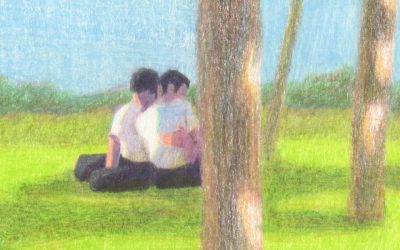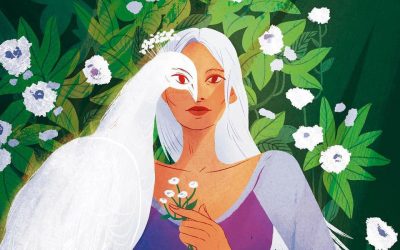[English version along the post] Abbiamo conosciuto Alexandra Zsigmond, Deputy Art Director del New York Times – Opinion Section, durante una masterclass dedicata ai NewMedia editoriali, organizzata lo scorso novembre da MiMaster a Milano. Con gentilezza e disponibilità non comuni, Alexandra ci ha permesso di continuare la conversazione telefonicamente, dal suo ufficio presso la Heighth Avenue, raccontandoci con sincerità gli onori e gli oneri di una professione dai ritmi febbrili, tanto famosa quanto in realtà poco conosciuta.
Ne è nata un’intervista redatta a più mani, molto dettagliata, che spazia dai criteri di scelta degli illustratori alle emozioni spesso molto personali in gioco, fino al futuro stesso dell’illustrazione, visto con gli occhi di chi lavora per il più importante quotidiano al mondo. Le approfondite risposte di Alexandra, ricche di consigli sia per giovani illustratori che per professionisti già rodati, fanno da gustoso antipasto al suo ritorno in Italia per un workshop sul visual journalism previsto durante la prossima edizione del master.
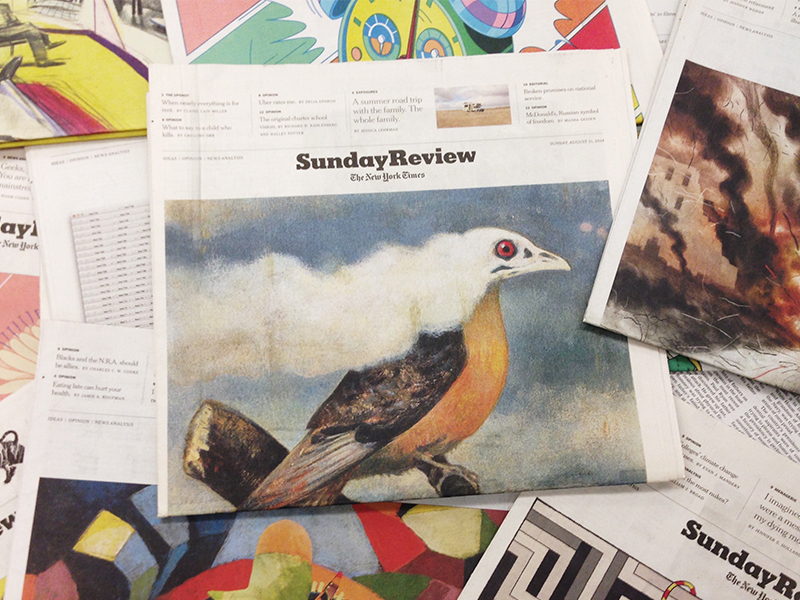
The New York Times Sunday Review
Ciao Alexandra, benvenuta su PICAME. Dalla laurea in Filosofia a Stanford alla direzione artistica della Opinion Section al New York Times: i punti di forza e di debolezza di una formazione eccentrica.
Stanford mi ha permesso di sviluppare un percorso interdisciplinare nelle scienze umane, una combinazione di estetica, storia dell’arte, filosofia e psicologia. Da quel momento ho cominciato ad interessarmi a come l’arte può visualizzare ed esprimere concetti filosofici complessi. Non credo che per un art director o per un designer sia necessario avere una formazione accademica in ambito umanistico, ma è stato estremamente utile per il mio lavoro al New York Times. I giornali sono intrinsecamente interdisciplinari e avere un’ampia base accademica ha reso più facile dirigere una così vasta gamma di argomenti. Dopo la laurea ho lavorato per alcuni anni in un museo d’arte contemporanea di San Francisco, gestendo il programma di arte giovanile e progettando i materiali per il marketing, dopodiché mi sono iscritta alla Parsons New School Of Design di New York per studiare più approfonditamente il design, e ho lavorato come web designer presso vari studi. Oggi uso queste competenze per progettare i layout per la sezione Review della domenica, e il lavoro è davvero un’eccellente combinazione dei miei interessi accademici e professionali negli ultimi dieci anni. Una debolezza: le mie capacità di progettazione non sono forse così forti o a tutto tondo come vorrei, in parte perché la mia formazione nel campo del design è durata solo due anni anziché quattro, e sono un po’ più debole rispetto ad altri colleghi che hanno ricevuto un BFA in design o illustrazione.
“Le scadenze del Times sono strette, e spesso si hanno a disposizione solo 5 ore per ultimare il lavoro, così i criteri che potrei utilizzare per selezionare un illustratore cambiano”
La poetica di Alexandra Zsigmond come art director: se per ogni articolo esistono teoricamente infinite possibilità di immagini, la scelta è nel gusto. Quali sono le qualità generali che cerchi in una illustrazione?
Commissiono circa 9 o 10 illustrazioni a settimana. La direzione artistica è intrinsecamente soggettiva e basata sul gusto, come dicevi, e direi che il mio è stato formato da un interesse di fondo per il surrealismo, l’astrazione, l’espressionismo, l’arte concettuale e il fumetto. Spesso tendo a soluzioni visive che prendo in prestito da uno di questi paradigmi, ma resto generalmente aperta a tutti gli approcci stilistici, a condizione che il concetto di base sia chiaro, convincente e ben eseguito. Concetti ed esecuzioni potenti riassumono quello che cerco, qualunque sia lo stile. Mettendo in relazione un artista ad un articolo, ci sono alcune domande che tendo a farmi. L’argomento sembra adattarsi agli interessi dell’artista, come dimostrato da un altro lavoro nel suo portfolio? Sulla base dei lavori precedenti, come potrebbe avvicinarsi all’articolo, sia concettualmente che stilisticamente? Il tono emotivo del suo lavoro si adatta a questo articolo? Questo argomento sfida l’artista in modo positivo, costringendolo fuori dalla sua “comfort zone”, e l’artista sembra abbastanza esperto per questa sfida? E poi naturalmente ci sono le considerazioni legate al tempo. Le scadenze del Times sono strette, e spesso si hanno a disposizione solo 5 ore per ultimare il lavoro, così i criteri che potrei utilizzare per selezionare un illustratore cambiano, un programma più stretto può rendermi incline ad assumere illustratori con cui ho lavorato in precedenza e che hanno una comprovata esperienza, e meno incline a scegliere un neolaureato, per esempio. Tutto, comunque, è valutato caso per caso, e spesso prendo rischi creativi, anche quando il tempo è limitato.
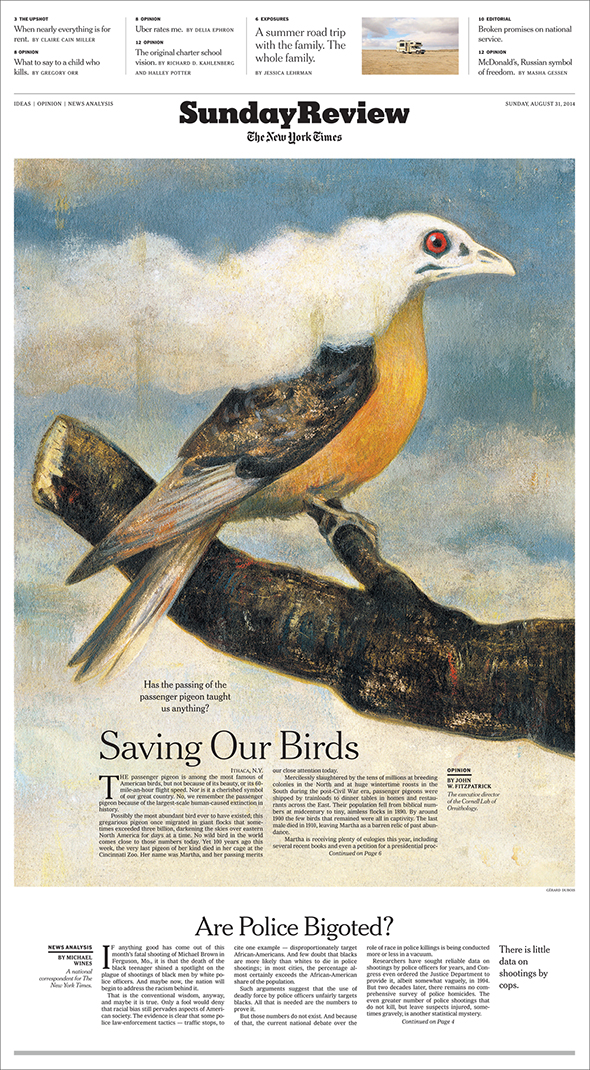
Saving Our Birds - Gérard Dubois
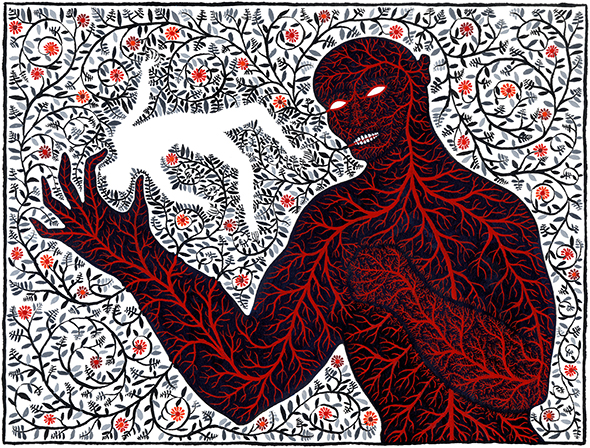
Someone’s Knocking at My Door by Balint Zsako
In che modo funziona la ricerca degli artisti? Avete un database da cui pescare o sperimentare ogni volta?
Lavoro come art director al Times da oltre quattro anni e ad oggi ho probabilmente commissionato circa 2000 illustrazioni e collaborato con un immenso elenco di illustratori. Questo lavoro diventa sicuramente più facile col tempo, perché lentamente si guadagnano conoscenza e comprensione degli illustratori, dei loro punti di forza e debolezza, dei loro interessi, del loro stile e dell’approccio editoriale. Per aiutare a mantenere traccia degli illustratori freelance con cui lavoriamo, teniamo un database online su un sito chiamato Diigo, che ci permette di salvare i link ai vari portfoli, aggiungere tag per argomenti o parole chiave, e salvare le immagini di riferimento. Posso salvare il sito di un artista, taggarlo con le parole chiave “concettuale”, “psicologia”, “politica”, “London”, come temi possibili per un abbinamento e salvare un’immagine a rapido promemoria dello stile. Se mi capita di avere un articolo sulla politica inglese, cerco nel database, che agisce essenzialmente come aiuto per la memoria e il brainstorming. Inoltre faccio costante ricerca per ampliare il nostro roster di artisti, guardo siti come It’s Nice That e Booooooom e trovo estremamente utili le antologie di fumetti e illustrazioni: Nobrow, American Illustration, Kramer’s Ergot, Mould Map e Kus Comics, per citarne alcuni. Vado a un sacco di eventi della Society of Illustrators per incontrare illustratori emergenti e alle aperture delle gallerie di belle arti. E mantengo attivi rapporti di collaborazione con scuole d’arte nazionali e internazionali.
“In quattro anni al NYT ho probabilmente commissionato circa 2000 illustrazioni e collaborato con altrettanti illustratori. Faccio costante ricerca per ampliare il nostro roster di artisti, sia online che sulle antologie di fumetti e illustrazioni”
Un valore essenziale e un difetto per un art director.
Una sfida che a volte affronto è l’insicurezza, anche se non la considero necessariamente un difetto, in quanto può anche portare benefici. Posso avere dei dubbi in merito alla scelta del bozzetto giusto, guardando a 4-6 idee diverse a volte può essere difficile decidere quale sarà la più chiara e la più incisiva. Altre volte ho dubbi su quanto spingere gli illustratori a migliorare le loro bozze. Voglio spingere gli artisti a creare il loro lavoro migliore in assoluto, ma anche onorare il loro tempo, e, talvolta, c’è un conflitto tra questi due aspetti. Mentre ci sono molti momenti in cui intuitivamente intraprendo la giusta linea di azione, in altri non mi sento così sicura, e questo genera una buona dose di ansia. In definitiva ho imparato che è semplicemente impossibile risultare infallibili al 100%. A volte diamo eccellenti giudizi e a volte no, sia come illustratori che come art director. Questo è ciò che rende i consigli dei colleghi così cruciali. Mi affido ai miei collaboratori Aviva e Matt per verificare se sto valutando correttamente un’immagine, se vedo ciò che gli altri vedono. La discussione è fondamentale per il processo e sono sempre molto grata per il loro contributo. Unitamente a trovare il metodo produttivo, penso che un direttore artistico debba avere una forte capacità di progettazione e una solida base in storia dell’arte e del design. Essere un art director significa collaborare e avere delle ottime capacità di comunicazione.
Durante il nostro incontro al MiMaster abbiamo appreso che nel tempo libero ti dedichi al disegno. In particolare, la rappresentazione di emozioni e stati mentali è un tema a te molto caro. Quale ruolo ricopre l’illustrazione? È solo uno strumento descrittivo o un veicolo per indagare l’interiorità dell’essere umano?
Sono interessata al disegno come forma di filosofia visiva, come mezzo per visualizzare concetti astratti, emozioni e stati psicologici. Purtroppo, a causa della mole di lavoro, non riesco a dedicargli tutto il tempo che vorrei, ma quando riesco, quello che creo è architettonico, concettuale e minimale. Al momento sto lavorando ad una serie di disegni sui totem, uno dei quali è stato recentemente pubblicato sulla rivista Nat Brut. Mi interessano le metafore visive che usiamo per capire e descrivere la mente, e in particolare quelle architettoniche. Tendiamo a visualizzare le teorie e le idee come edifici, e questo si manifesta nel linguaggio: le idee hanno “fondamenta”, sono costruite nel corso del tempo, possono essere traballanti o forti. Se estendiamo questa metafora concettualmente, potremmo pensare ai singoli pensieri come mattoni, o immaginare una teoria nella nostra mente come una pianta. I miei disegni sono visualizzazioni esplorative di queste idee. Mi piace scoprire questo tipo di metafore visive anche nel disegno altrui: il mio blog Headroom è una collezione di disegni contemporanei e storici, che possono essere letti come metafore di stati psicologici.
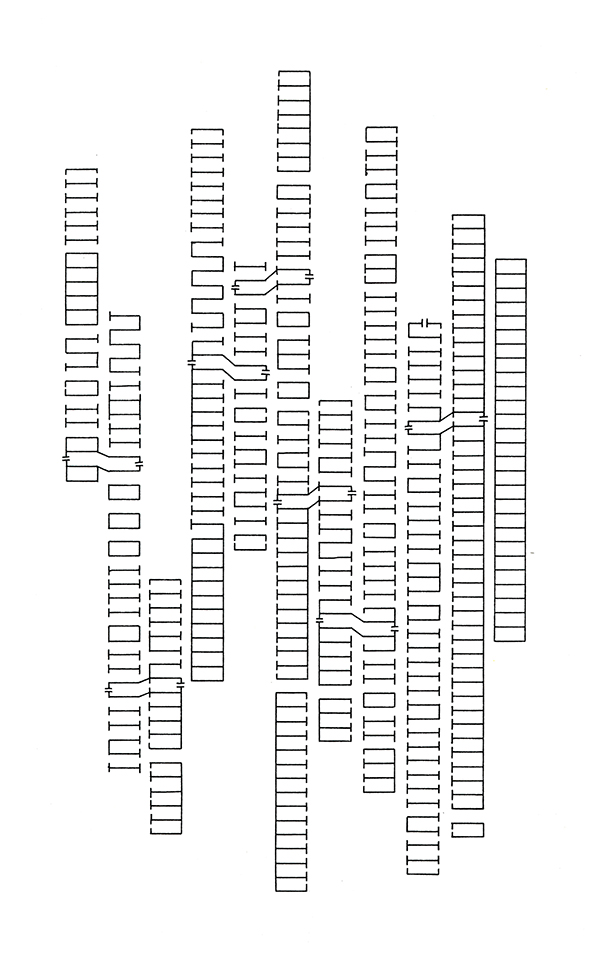
Drawing - Alexandra Zsigmond
Il New York Times e i nuovi media: le immagini animate e le interfacce digitali diventano parte integrante della narrazione per facilitare la comprensione. È questo il futuro dell’illustrazione per riviste?
Non credo sia l’unico futuro, ma penso che ne sarà una componente chiave. La narrazione animata o interattiva sta diventando sempre più presente e continuerà a crescere nel corso del tempo. Alla sezione Opinions del New York Times abbiamo iniziato a usare GIF animate circa quattro anni fa, proprio quando ho iniziato a lavorare io. Da allora, l’animazione online è diventata una componente chiave della nostra direzione artistica. Commissioniamo GIF non perchè siano solamente belle da guardare, anche se l’interesse visivo che generano è certamente utile, ma per rafforzare i concetti. Non tutte le illustrazioni sono adatte ma quelle che si prestano e vengono enfatizzate dal movimento, a livello concettuale funzionano davvero meglio, ed è importante per un art director capire questa differenza. Stiamo sperimentando anche altri modi per utilizzare l’animazione come narrazione digitale. Un esempio recente è il fumetto animato che abbiamo commissionato all’artista Lilli Carré: l’artwork intreccia splendidamente parole, immagini statiche e animazioni in una narrazione basata sui fumetti, una forma che credo potrà diventare sempre più comune online. Mi interessa anche come i videogame che poggiano sui browser possano essere utilizzati come illustrazioni editoriali. Pippin Bar ha creato un semplice gioco per incoraggiare le giovani donne a imparare a programmare. Si tratta di una versione del gioco classico Pong, ad eccezione del fatto che il codice che scorre il profilo della ragazza è il codice che esegue il gioco stesso. Vorrei continuare a sperimentare nuove forme digitali come questa, sono un modo per scoprire e partecipare al futuro dell’illustrazione online.
“La narrazione animata sta diventando sempre più presente e continuerà a crescere nel corso del tempo. Abbiamo iniziato a usare GIF animate circa quattro anni fa, da allora l’animazione online è diventata una componente chiave della nostra direzione artistica”
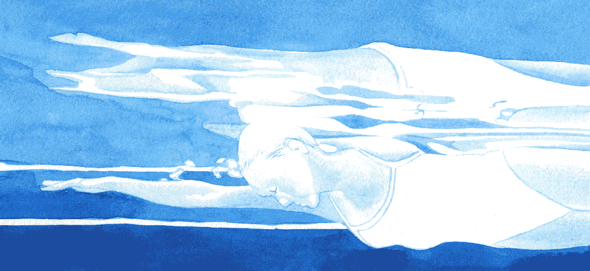
The Joy of Swimming, and Meditating - Rebecca Bird
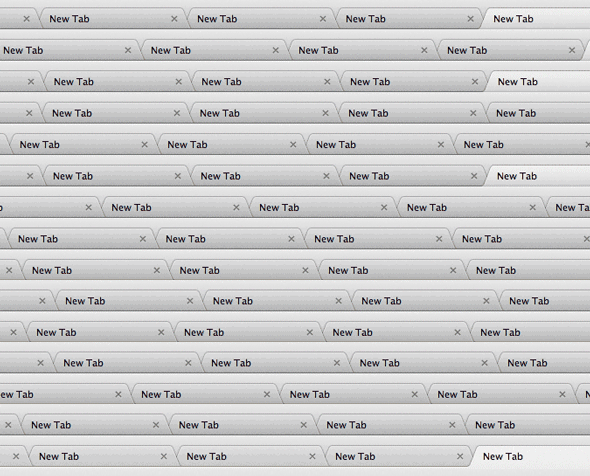
Faking Cultural Literacy - Jennifer Daniel
Quali sono le competenze necessarie affinché l’illustratore editoriale sia efficace in questo nuovo panorama emergente?
Penso che un illustratore editoriale debba avere una buona conoscenza dei simboli e delle metafore di uso più frequente. Ci sono così tanti luoghi comuni visivi che sono diventati stantii – la croce rossa, la mela del docente, il simbolo del dollaro – e penso sia fondamentale esserne consapevoli per evitarli, sovvertirli, o reinventarli. Dato l’ambiente digitale in cui illustrazione vive oggigiorno è poi estremamente importante sapere creare una GIF ed essere dotati di capacità di animazione di base. Le capacità di progettazione grafica aiutano, sono un modo per capire meglio come immagine e testo possano integrarsi tra loro visivamente, sia online che in stampa. Infine, un illustratore dovrebbe essere molto attivo nel promuovere il proprio lavoro, raggiungendo regolarmente potenziali clienti sia attraverso il web che di persona.
“La cosa più importante è avere un sito web semplice, con i lavori migliori. Per entrare in contatto con gli art director, inviate una cortese e breve e-mail con il link al sito e qualche JPG di esempio. Niente telefonate”
Qualche consiglio ai molti illustratori che ci leggono per farsi notare da chi fa il tuo lavoro.
La cosa più importante è avere un sito web semplice e facilmente navigabile, con i lavori migliori. Per entrare in contatto con gli art director, consiglierei l’invio di una cortese, breve e-mail con il link al sito e qualche JPG di esempio. Niente telefonate. Se non ricevete risposta, trovo accettabile riscrivere dopo 4-6 mesi, per un aggiornamento. Non si deve necessariamente aspettare una risposta, ma si può essere abbastanza certi che il direttore artistico avrà preso atto del vostro lavoro, e che sarete contattati se capiterà un incarico opportuno. Anche le cartoline promozionali sono un ottimo modo per farsi notare. Raccomanderei l’invio di una cartolina della vostra immagine più forte, con il nome e il sito sul retro. Non occorre che sia particolarmente curata, solo funzionale. Dal momento che spesso trovo illustratori cercando su antologie stampate e online, consiglio anche di promuovere il lavoro su una vasta gamma di riviste e siti web. E se volete entrare in contatto con me direttamente: e-mail brevi e semplici, e io farò del mio meglio per rispondervi.
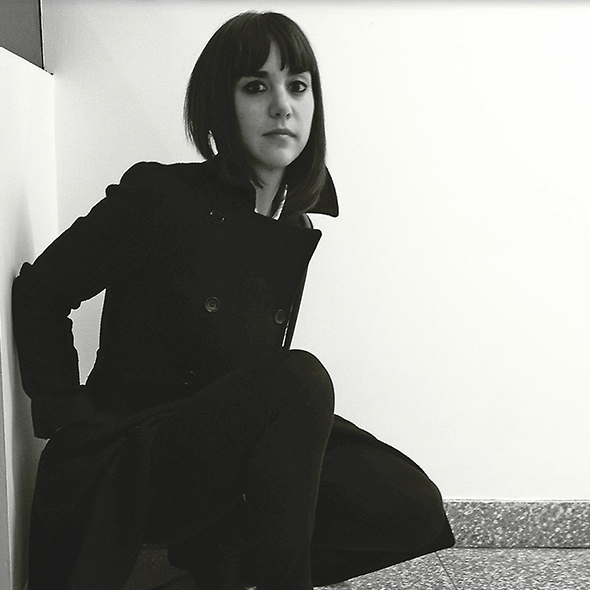
Alexandra Zsigmond
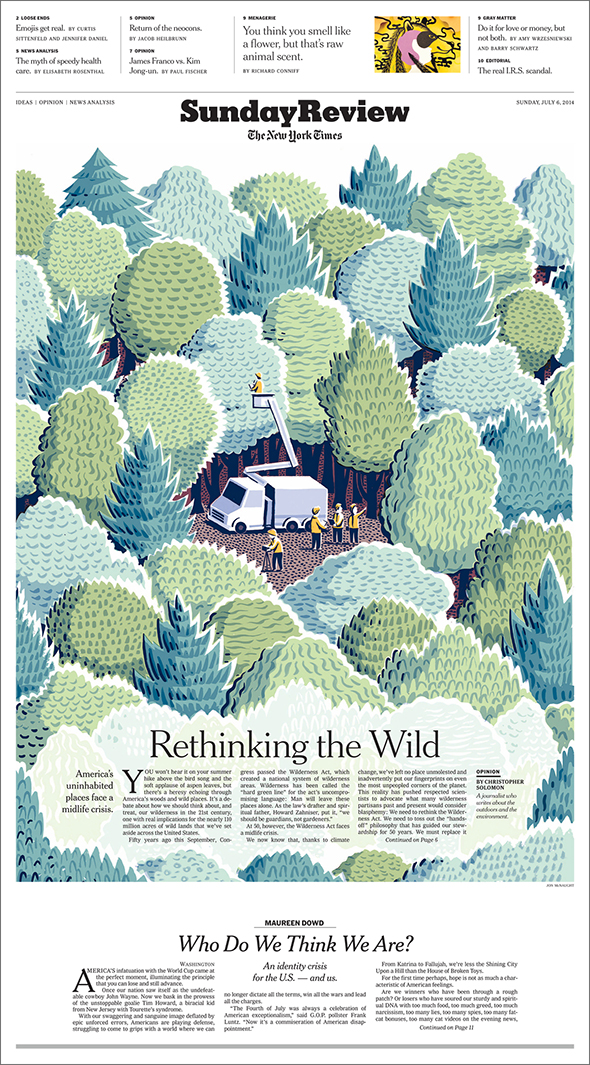
- Rethinking the Wild – Jon McNaught
[Intervista di: Mimaster, Roberta Zeta, Andrea Berretta, Stefano Bagnasco]
LEGGI ANCHE: “I learn by watching you” L’intervista di Emiliano Ponzi per Annual Typography
—
ENG
We had the pleasure to know Alexandra Zsigmond, Deputy Art Director of the New York Times (Opinion Section), during a masterclass dedicated to editorial NewMedia, organized last November by MiMaster in Milan. With uncommon kindness, Alexandra has allowed us to continue the conversation by phone from her office at the Heighth Avenue, telling sincerely honors and charges of this profession characterized by feverish rhythms, so much famous as actually little known. We realized an interview prepared by several hands, studied even in the most specific details, which ranges from the criteria of choice of illustrators to very personal emotions, up to the future of illustration, seen through the eyes of a person who works for the most important newspaper in the world. The in-depth answers of Alexandra, full of hints for both young illustrators and professionals, represent a tasty appetizer before her return to Italy during the next edition of the master for a seminar on visual journalism.
From graduating in philosophy at Stanford to art direction of the Opinion Section at the New York Times. The strengths and weaknesses of an eccentric education.
Stanford allowed me to develop my own interdisciplinary major in the humanities, a combination of aesthetics, art history, philosophy and psychology. So since college I’ve been interested in how art can visualize and express complex philosophical concepts. I don’t think it’s necessarily typical for an art director or designer to have an academic background in the humanities, but I think it has been extremely beneficial to my work at the New York Times. Newspapers are inherently interdisciplinary, and having a broad academic foundation has made it easier to art direct articles on a similarly broad range of topics. After graduating from Stanford I worked for a few years at a contemporary art museum in San Francisco, managing their youth art program and designing their marketing materials. From there I ended up at Parsons The New School in New York to study design more deeply, and later worked as a web and book designer at various studios. I now use these skills to design layouts for the editorial and Sunday Review sections at the Times. So the job really is an excellent combination of both my academic and professional interests over the past decade. A weakness I observe in myself is that my design skills are perhaps not as strong or well-rounded as I’d like. This is partially because my formal design education was two years rather than four, so I have a somewhat weaker foundation than other colleagues who received a BFA in design or illustration.
The poetics of Alexandra Zsigmond as art director: if for every article to illustrate theoretically infinite possibilities for effective image exist, the choice is in the taste. Which are the general qualities that you look for in an illustration?
I commission about 9 or 10 illustrations per week. Art directing is inherently subjective and taste-based, as you mention, and I’d say my taste has been formed by a background and interest in surrealism, abstraction, expressionism, outsider art, conceptual art, information design and comics. So often I’m interested in visual solutions that borrow from one of these paradigms. But in general I’m quite open to all sorts of stylistic approaches, as long as the core visual concept of the piece is clear and compelling, and the finish is beautifully executed. Strong concept and strong execution—that sums up what I look for, regardless of style. In matching an artist to an article, there are a few questions I tend to ask myself. How much does the topic seem to fit the artist’s interests, as demonstrated by other work in her portfolio? Based on previous work, how might she approach the piece, both conceptually and stylistically? Does the emotional tone of her work fit the tone of the article? Would this topic challenge the artist in a beneficial way, forcing her out of her comfort zone into new visual territory, and does the artist seem experienced and confident enough for that challenge? And of course there are always time considerations. The deadlines at the Times are tight, and often illustrators only have 5 hours from sketch to finish. So sometimes the criteria that I might use to select an illustrator for a three-day assignment change considerably given a four hour deadline. A tighter schedule can make me more inclined to hire illustrators I’ve worked with previously who have a proven track record, and less inclined to take a chance on a new graduate, for example. Everything is case-by-case, however, so I still frequently take creative risks even when time is limited.
How does the research of the artists work? Do you have a database you draw from or do you count on instinct and experience each time?
I’ve been art directing at the Times for over four years now and have probably commissioned around 2000 illustrations in that time. So I’ve worked with an immense roster of illustrators. This is definitely a job that gets easier the longer you do it, because you slowly gain a working knowledge and understanding of the illustrators you collaborate with: their individual strengths and weaknesses, their interests, their general work style and editorial approach. This knowledge in turn helps you make better, more informed matches between artist and article. To help keep track of the freelance illustrators we work with, we keep an online database on a social bookmarking site called Diigo. The site allows us to save links to illustrators’ portfolio sites, tag them by topic or keyword, and save reference images. So, for example, I might save an artist’s website, tag it with the keywords “conceptual” “psychology” “politics” “london” to match the topics I think they could illustrate well and where they live, and save an image from their site to serve as a quick reminder of their style. Then, if I happen to have an article on English politics, I can search the database and will be reminded of that artist. I might then add that artist to my list as I brainstorm who to hire for the assignment. Essentially this acts as a helpful brainstorming tool and memory aid. I am also constantly doing research to expand our roster of artists. I spend a lot of time online looking at sites such as It’s nice that and Booooooom and traveling down the link rabbit-hole. I find illustration and comics anthologies to be extremely helpful: Nobrow, American Illustration, Kramer’s Ergot, Mould Map and Kus Comics, to name a few. I go to a lot of events at the Society of Illustrators to scout emerging illustrators, and to gallery openings to scout fine artists whose work might fit in an editorial context. And I maintain active relationships and collaborations with art schools nationally and internationally.
An essential value and defect for an art director.
One challenge I sometimes face is self-doubt, although I wouldn’t necessarily call that a defect, since I think it can work to one’s benefit. Typically I’ll experience doubt about whether I’ve chosen the right sketch for an illustrator to pursue to final. When looking at 4-6 different ideas, it can sometimes be difficult to decide which of them will be the clearest and most impactful. Other times I have doubt about how much to push illustrators to improve upon their sketches or final artwork. I want to push artists to create their absolute best work, while also honoring their time, and sometimes there is tension between the two. While there are many moments that I intuitively know the right course of action, there are others when I’m just not so sure, and that generates a good deal of anxiety. Ultimately what I’ve learned from this is that it’s simply impossible to have fool-proof confidence in your own eye 100% of the time. Sometimes we make excellent judgments, and sometimes we don’t, both as illustrators and as art directors. That’s what makes the feedback and advice of colleagues so crucial to the process. I rely on my coworkers Aviva and Matt to help me verify that I’m seeing an image correctly, that I see what others see. Discussion is crucial to the process and I’m always so grateful for their input. Art directors need to be directed too! Along with finding productive ways to wrestle with self-doubt, I think an art director needs to be an excellent visual thinker, have strong design skills, have a solid foundation in art and design history, and be socially graceful. Being an art director is inherently collaborative, so good social and communication skills are key.
During our meeting at MiMaster we learned that in your free time you dedicate yourself to the illustration too. In particular, the representation of emotions and mental states is a subject very dear to you. Which role does the picture play? Is it merely a descriptive tool or a vehicle to investigate the interior of the human being?
I’m interested in drawing as a form of visual philosophy, as a means to visualize abstract concepts, emotions and psychological states. Unfortunately because of my work schedule I don’t devote as much time to drawing as I would like. But when I do draw the work I create is architectural, conceptual and minimal. At the moment I’m working on a series of totem drawings, one of which was recently published in the magazine Nat Brut. I’m interested in the array of visual metaphors we use to comprehend and describe the mind, particularly architectural metaphors. So, for example, we tend to view theories, ideas and arguments as buildings, and this manifests in language: ideas have ‘foundations,’ they are ‘built’ over time, they can by ‘shaky’ or ‘strong,’ we ‘construct’ them using ‘frameworks.’ If we extend this metaphor conceptually, we might think of individual thoughts as bricks, or imagine a theory in our mind as a floorplan of rooms. My drawings are exploratory visualizations of these ideas. I also enjoy discovering these sorts of visual metaphors in the artwork of others. For example, my blog Headroom is a collection of head drawings, both contemporary and historical, that can be read as metaphors for psychological states.
The New York Times and the new media: animated images and digital interfaces become an integral part of the narration to facilitate understanding. Is this the future of illustration for magazines?
I don’t think it’s the only future, but I think it is a key component of that future. Animated or interactive online storytelling is becoming more and more prevalent and will only continue to grow over time. We began curating animated GIFs online at the New York Times Opinion section about four years ago, right when I started working there. Since then, online animation has become a key component of our art direction. We don’t commission GIFs to provide flashy online eye-candy, although the visual interest they generate is certainly a beneficial side-effect. Rather, we view animation as a way to strengthen an editorial concept. Not all illustrations lend themselves to movement or seem to profit from it conceptually, but some really do, and it’s important as an art director to know the difference. We are now experimenting with additional ways to utilize animation as digital storytelling. One recent example is an animated comic we commissioned by artist Lilli Carré. The piece beautifully weaves together words, static imagery and animation into a comics-based narrative. It’s a form that I think might become more and more common online. I’m also interested in how browser-based videogames can be utilized as editorial illustration. For example, the videogame artist and scholar Pippin Bar created a simple game to accompany an Opinion article on encouraging young women to learn coding. It’s a version of the classic game Pong, except the code scrolling through the girl’s profile is the code running the game itself. Thus, this videogame functions as an interactive illustration of the core argument of the piece. I’d like to continue to experiment with new digital forms such as these, as a way to discover and participate in the future of online illustration.
What are the skills needed for the illustrator to be effective in this new emerging landscape?
I think an editorial illustrator should have a solid working knowledge of the symbols and metaphors used most frequently in conceptual illustration. There are so many visual clichés that have become stale from overuse —the red cross, the teacher’s apple, the caduceus, the dollar sign, to name a few — and I think it’s crucial to be aware of them as way to avoid, subvert, or reinvent them. Given the digital environment in which illustration appears now, it’s also extremely important to know how to create a GIF and have basic animation skills. Graphic design skills help too, as a way to better understand how image and text can complement one another visually, both online and in print. Finally, an illustrator should be very proactive in promoting their own work, reaching out regularly to potential clients both online and in person.
Any advice to the many illustrators who read us to get noticed by those who make your job.
I think it’s most important to have a simple, easily navigable website to display your best work. In terms of getting in touch with art directors, I’d recommend sending a polite, short e-mail with a link to your website and perhaps one or two attached sample jpgs. No cold calls. If you don’t hear back, I think it’s acceptable to write again in 4-6 months with an update. You shouldn’t necessarily expect a response, but you can be pretty confident that the art director has taken note of your work regardless and will contact you if an assignment seems fitting. Postcard promos are also still a great way to get noticed. We have a whole wall of promos that we use to brainstorm illustrators. I’d recommend sending out a postcard of your strongest image, with your name and website on the back. It doesn’t have to be fancy, just functional. Since I frequently find illustrators by looking at print and online anthologies, I’d also recommend promoting your work to a wide range of magazines and websites. And if you want to get in touch with me directly, you can. Please keep your e-mail short and simple, and I’ll do my best to get back to you.
READ ALSO: “I learn by watching you” Emiliano Ponzi x Annual Typography
